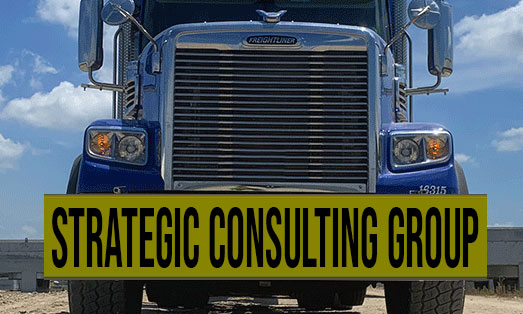Why RioTinto Stadium Upgrades for Risk Mitigation: Implementing strategies to minimize project risks. and Pre-Construction Services?
Pre-Construction Services, Risk Mitigation: Implementing strategies to minimize project risks., and more…
Okay, let’s inject some more opinion into your risk mitigation description. Here’s a revised version with a stronger, more assertive tone:
**In the cutthroat world of projects, risk mitigation isn’t just a good idea – it’s a survival tactic. It’s about ruthlessly identifying every potential disaster waiting to happen and then taking decisive action to either prevent it or minimize its impact. **
**Here’s the brutal truth: communication is the lifeblood of effective risk mitigation. You can’t expect your team to handle the unexpected if they’re in the dark. Every team member needs to be crystal clear on the potential pitfalls and the strategies we’ve put in place to overcome them. **
And let’s not forget about those stakeholders – the customers, the funders, the partners. They need to be in the loop too. Keeping them informed about progress and involving them in crucial decisions is the best way to build trust and ensure their needs are truly met.
In this particular project, we implemented a number of hard-nosed strategies to mitigate risk:
- Weather monitoring wasn’t an option – it was a necessity. We didn’t just glance at a forecast; we dissected it, adjusting the construction schedule on a dime to avoid delays. Think of it like this: we were building a fortress, not a sandcastle. This project needed to withstand any storm.
By embracing this proactive, no-nonsense approach to risk management, we were able to keep this project on track and deliver results.
Here’s the takeaway: successful projects are built on a foundation of robust risk mitigation. It’s not a game for the faint of heart, but it’s the difference between triumph and disaster.
Avoiding Project Pitfalls: A Guide to Risk Mitigation
TL;DR – Too Long; Didn’t Read:
Risk mitigation is all about planning ahead to avoid problems in your project. By identifying potential issues, coming up with solutions, and putting those solutions into action, you can make sure your project stays on track and meets its goals. This article explains how to identify and manage risk, and gives real-life examples from projects like the Rio Tinto Stadium upgrades.
What is Risk Mitigation?
Imagine you’re building a sandcastle on the beach. What could go wrong? The waves could wash it away, the wind could blow it down, or you could run out of sand! Risk mitigation is like taking steps to protect your sandcastle. You might build it higher up on the beach, use stronger sand, or have extra sand ready just in case.
In the world of projects, risk mitigation is the process of figuring out what could go wrong and taking steps to prevent or lessen the impact of those problems. Think of it like a safety net – it’s there to catch you if you stumble.
Why is Risk Mitigation Important?
Imagine you’re building a giant spaceship for a trip to Mars. There are a lot of things that could go wrong! The engines might malfunction, the fuel could run out, or the crew might get sick. Without risk mitigation, your mission could be doomed.
Here’s why risk mitigation is crucial:
- Saves time and money: Identifying and addressing risks early on can prevent costly delays and rework later.
- Improves project success: By planning for potential issues, you increase the likelihood of achieving your project goals.
- Reduces stress and anxiety: Knowing you’ve taken steps to minimize risks can give you peace of mind and help you focus on the project’s success.
Steps to Effective Risk Mitigation
H2. Identify the Risks:
The first step is to think about all the things that could go wrong in your project. Ask yourself questions like:
- What are the potential challenges?
- What could delay the project?
- What could cause the project to go over budget?
- What could impact the quality of the final product?
H3. Analyze the Risks:
Once you’ve identified potential risks, you need to figure out how likely they are to happen and how severe the impact would be if they did.
- Probability: How likely is this risk to occur?
- Impact: How much would this risk affect the project if it happened?
H3. Develop Risk Response Strategies
For each risk you’ve identified, you’ll need to come up with a plan to deal with it. There are four main approaches:
- Avoid: This means changing the project plan to completely eliminate the risk. For example, if you’re building a house in a hurricane-prone area, you might choose a different location to avoid the risk of storm damage.
- Mitigate: This means taking steps to reduce the likelihood or impact of the risk. For example, you could install hurricane-resistant windows and doors to reduce the damage if a storm does hit.
- Transfer: This means shifting the risk to someone else. For example, you could buy insurance to cover potential damage from a storm.
- Accept: This means deciding to live with the risk and not take any action. This is usually only a good option for risks that have a low probability and low impact.
H2. Implementing Risk Mitigation Strategies:
Once you’ve developed your strategies, it’s important to put them into action. This involves:
- Communicating the plan: Make sure everyone on the project team is aware of the risks and the strategies in place to manage them.
- Monitoring progress: Regularly check in on the risks and make sure the mitigation strategies are working.
- Adjusting as needed: If a risk changes or a mitigation strategy isn’t effective, be prepared to adjust your plan.
H2. Real-World Example: Rio Tinto Stadium Upgrades
The Rio Tinto Stadium in Utah, home to the Real Salt Lake soccer team, underwent a major renovation project. The project team faced numerous risks, including:
- Weather delays: Utah can experience unpredictable weather patterns, which could have disrupted construction.
- Supply chain issues: The stadium was built during a time when supply chains were disrupted due to the pandemic, which could have led to delays and cost overruns.
- Fan experience: The project team had to ensure that the upgrades didn’t negatively impact the fan experience during games.
To mitigate these risks, the project team implemented a number of strategies:
- Weather monitoring: They monitored weather forecasts closely and adjusted the construction schedule as needed to avoid delays.
- Alternative suppliers: They identified alternative suppliers for key materials to reduce the impact of supply chain issues.
- Communication and engagement: They kept fans informed about the progress of the project and involved them in the decision-making process to ensure their needs were met.
H2. Summary
Risk mitigation is an essential part of any project, no matter how big or small. By identifying potential problems, developing strategies to address them, and putting those strategies into action, you can increase the chances of your project being successful. It’s like building a sandcastle that can withstand the waves and the wind – with careful planning and preparation, you can make sure your project stays strong and achieves its goals.
More on Risk Mitigation: Implementing strategies to minimize project risks.…
- ## SEO Keywords: Risk Mitigation & Pre-Construction Services
- General Keywords:
- Risk Mitigation
- Project Risk Management
- Risk Assessment
- Risk Analysis
- Risk Control
- Risk Reduction
- Project Planning
- Pre-Construction Services
- Construction Planning
- Construction Management
- Construction Risk Management
- Specific Keywords:
- Construction Risk Assessment
- Construction Risk Mitigation Strategies
- Pre-Construction Planning Services
- Pre-Construction Cost Estimating
- Pre-Construction Design Review
- Construction Schedule Optimization
- Construction Quality Control
- Construction Safety Management
- Project Feasibility Studies
- Value Engineering
- Risk Register
- Risk Management Plan
- Risk Response Plan
- Risk Monitoring
- Risk Reporting
- Long-Tail Keywords:
- How to mitigate risks in construction projects
- Best practices for risk management in construction
- Importance of pre-construction services in construction
- Benefits of pre-construction planning
- How to choose the right pre-construction services provider
- Construction risk mitigation software
- Construction risk management tools
- Pre-construction services for commercial projects
- Pre-construction services for residential projects
- Construction risk mitigation for government projects
- Construction risk mitigation for infrastructure projects
- Location-Based Keywords:
- Construction risk mitigation services in [City/State]
- Pre-construction services for [Region]
- Construction risk management experts in [Country]
- [Specific Construction Type] risk management in [City/State]
- Additional Keywords:
- Construction Project Management
- Project Delivery Method
- Construction Contract Management
- Construction Insurance
- Construction Claims
- Construction Disputes
- Project Success Factors
- Construction Cost Control
- Construction Schedule Control
- Construction Safety Training
- Remember to:
- Use a mix of short-tail, mid-tail, and long-tail keywords.
- Include location-based keywords if targeting a specific area.
- Use keywords that are relevant to your specific services.
- Regularly update your keyword research to stay ahead of the competition.


